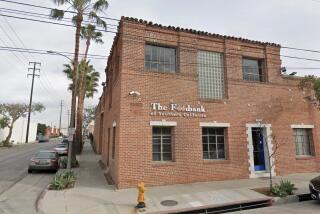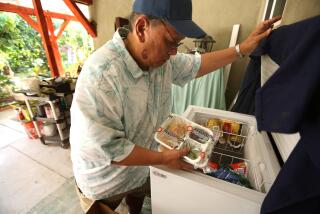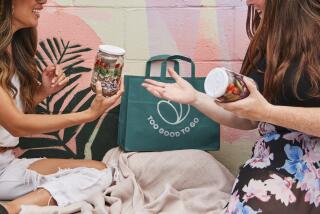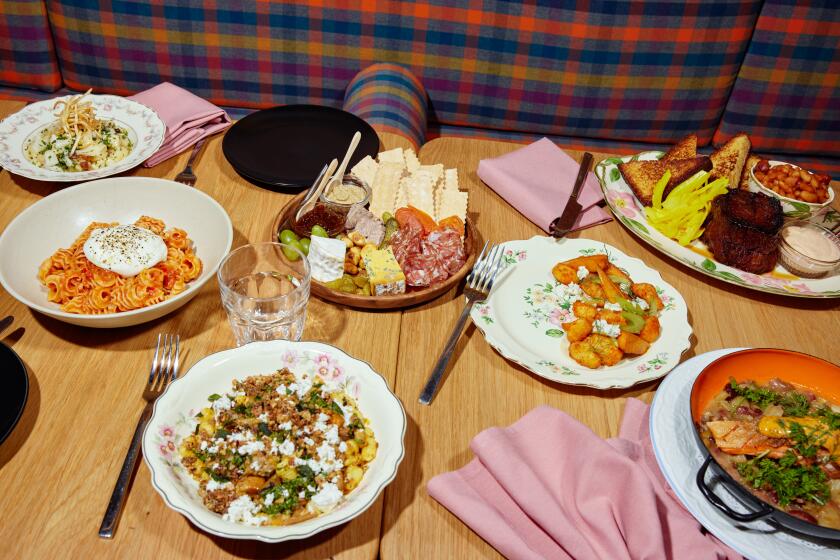Food Banks Teaching Veggie 101
- Share via
Sometimes an onion is just a onion. But for many low-income people, an onion -- or a carrot or broccoli, for that matter -- can be akin to a foreign object, its myriad culinary uses as mysterious as an exotic spice.
“I’m no longer surprised to bring out a bag of brown onions [at a food bank] and have people say they don’t know what to do with it,” said Peter Clarke, a professor of preventive medicine and communications at USC and director of its Center for Health & Medical Communication. “They’re not stupid people. They just have never been taught this stuff.”
Clarke is among a team of USC nutrition experts and computer scientists who hope to improve the diets of the estimated 24 million people nationally who rely on charitable food pantries.
With seed money from the National Science Foundation and Kraft Foods Inc., the group is testing software technology that uses personal information from food pantry users to help develop individual menu plans that incorporate fresh vegetables.
The effort evolved from work done by Clarke and USC research scientist Susan Evans, directors of Wholesalers to the Hungry, a program they launched about a dozen years ago to help food banks stock fresh produce along with packaged and canned items.
Along the way, the two researchers noticed that even when produce was available, some people turned it down or reported later in focus groups that they didn’t eat it. Many said they didn’t know how to prepare the eggplant, broccoli or carrots that were offered.
Having grown up in low-income homes, they had little experience cooking with fresh vegetables.
“That would be considered a luxury item for them,” said Karen Harrington, director of development for Share Our Selves, a Costa Mesa emergency services agency where USC’s Quick! Help for Meals system was tested recently.
“If you have a low-income family sitting there at the end of the month with a stack of bills, they’re asking, “Do I pay the electricity bill or buy food?’ ” she said. “Faced with that, the things that are more expensive -- the foods that are good for you -- aren’t going to be purchased.”
Combating hunger in America once centered exclusively on preventing starvation. Today, faced with increases in diabetes, heart disease and obesity among low-income people, emergency food centers are focusing more on providing the hungry with healthful foods.
“We’ve gone to a much more conscious and focused effort to increase the nutritional content of the diet of people who can’t afford to purchase food,” Bob Forney, chief executive of America’s Second Harvest, the nation’s largest food bank network.
As recently as six years ago, Forney said, relatively few food banks offered produce because of the effort it took to gather and distribute perishables. This year, about 275 million pounds of produce -- from farmers, wholesalers and distributors -- will be given out by his agency.
In tests in Costa Mesa and at other regional food banks, the USC researchers asked recipients questions to ascertain their cooking skills, food preferences, family makeup and how well their kitchens were equipped.
Using a program developed by computer engineers Eduard Hovy and Andrew Philpot, customized booklets with recipes for the vegetables distributed by a food bank that day are produced within minutes.
Follow-up interviews found that people given the booklets increased their typical intake of vegetables, compared with those who were not. Also, half of those given personalized menu plans still had them six weeks later, while nearly no one given a generic plan kept it.
The successful first tests have convinced the researchers to approach foundations for grants to conduct large-scale trials that they hope will lead to the system being offered to thousands of food banks nationwide, Clarke said.
“As we look at trying to end hunger ... it is important that we come up with more ideas like this,” said Forney of America’s Second Harvest.
“It will work. It makes sense to utilize technology to reach an individual in a way we otherwise wouldn’t.”
More to Read
Eat your way across L.A.
Get our weekly Tasting Notes newsletter for reviews, news and more.
You may occasionally receive promotional content from the Los Angeles Times.










